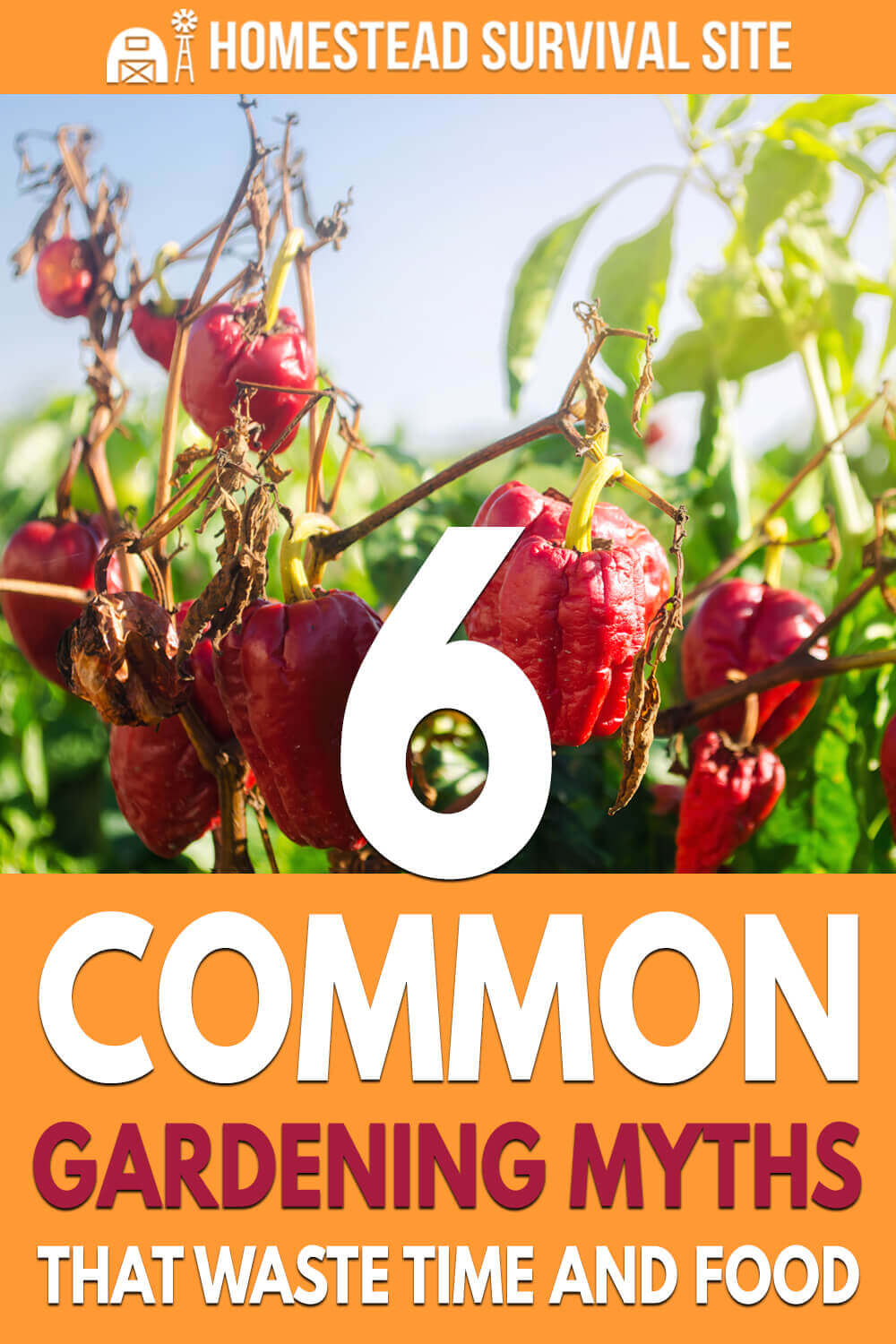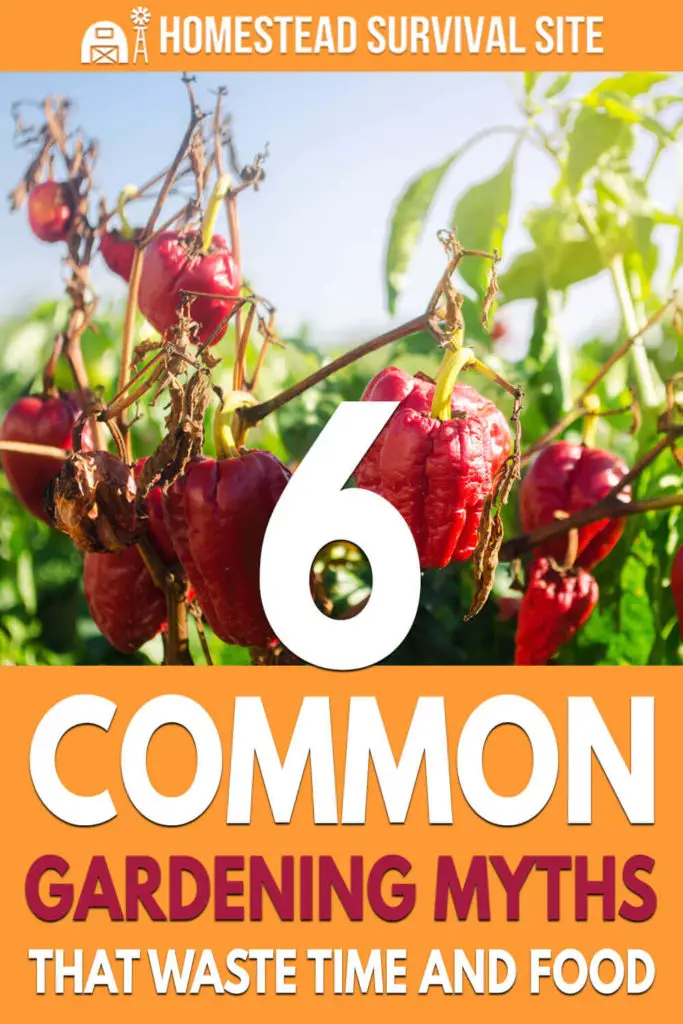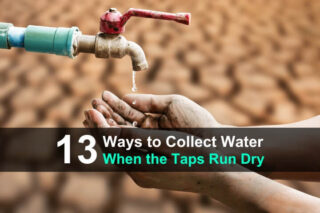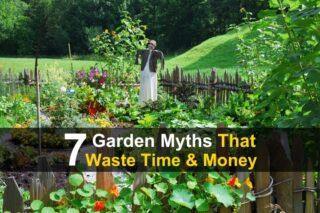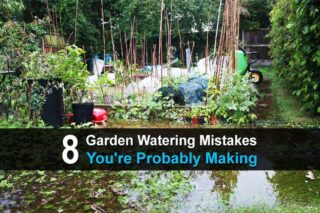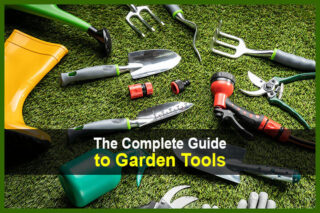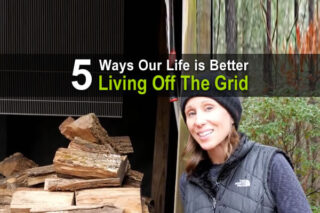Estimated reading time: 6 minutes
Much of our knowledge has been handed down through generations of farmers and gardeners. Science and technology also regularly add new information. But, without years of experience, you may be fooled by common gardening myths that waste time, money, and food.
So here are some tips and techniques that aren’t worth the hassle or expense.
Want to save this post for later? Click Here to Pin It On Pinterest!
Save Time and Don’t Do This in the Garden
1. Dig a square hole twice as wide and twice as deep as the root ball.
The claim is that a square hole will allow healthier root growth outside of the planting hole. Plants left too long in round pots often become root-bound or girdled. Square-hole fans fear that a round hole would encourage the plant’s roots to continue to grow in a circle.
Their theory is that the root won’t turn at the corners of the square hole and instead go through the side into the native soil. But, of course, the roots will do the same thing in a round hole if they aren’t left in a completely girdled state. (This leads to our next myth below.)
There is no solid scientific evidence that supports this theory. Most data leans towards the benefits of the standard round holes.
Digging the hole twice as wide as the root ball encourages roots to spread horizontally. Planting too deep or too shallow, however, can kill your plants or trees. If you aren’t sure of your plant’s needs, keep the top of the root ball even with the surrounding soil and have all roots covered.
2. Leave the root ball untouched when planting.
Some plants can indeed be harmed by having their roots disturbed. But if you are careful, there are several reasons to unwrap that root ball or girdled mass of roots. First, spreading the roots out before planting often helps the plant get established sooner.
Inspecting a plant’s roots is important to remove debris or damaged roots. In addition, the soil surrounding the root ball differs from your garden soil in both texture and makeup. Remove some of it to allow your garden soil to mix in for better water absorption and root growth.
3. Forget about watering drought-resistant plants.
All plants need water at some point, especially young or newly planted specimens. Most plants labeled drought-resistant become tolerant to dry conditions once they are established. After the first year or so, they won’t require supplemental water. They will have sent out enough roots and stored enough water to get through the summer months.
Don’t be afraid to water these types of plants, though. They still enjoy a good drink when it’s hot. So if a plant looks thirsty, water it!
Don’t Waste Food or Money on these Gardening Myths
4. Higher organic matter equals more nutrition and healthier plants.
Adding compost to your garden is important, but not always for the reasons you think. Garden soil should not contain more than 5% organic matter (OM). Too much can harm your plants and their growth.
Surprisingly, compost is low in nutritional value for your plants. Most balanced NPK (nitrogen/phosphorus/potassium) fertilizers are in the 10-10-10 range. Regular compost is closer to 1-1-1, so there aren’t many nutrients immediately available. BUT that isn’t where compost shines anyway.
The bacteria and fungi that grow in compost are what benefit your plants. These often invisible helpers form a bond with your plants. They then transform the compost into the nutrients most needed by their new plant friends.
5. Plant a few marigolds to deter bad bugs from the garden.
Grow marigolds for their beauty and ease. But don’t expect them to be a magic “bad bug” repellant. This myth has a bit of truth and a lot of folklore. The first part involves how many plants are needed. Many gardeners put one or two in their beds or planters.
Marigolds may deter pests from their immediate area but not from neighboring plants. Mass plantings are the only way of ensuring their effectiveness – if it really works.
French-type marigolds do repel whiteflies but not other pests like cabbage moths. Some marigolds help fight nematodes, while others do the opposite and invite pests in. You are better off planting the “trap plant” varieties at the garden borders to draw the pests away.
6. Bananas, coffee, eggs, and sugar make healthier plants.
No, but they could be part of a good breakfast. Gardeners still tout the benefits of adding various foods to the planting cycle. “Add a banana for potassium” or “Sugar gives you sweeter tomatoes” are two of them. So sorry, but science doesn’t agree.
Bananas
Bananas are an excellent addition – to the compost bin. Adding them directly to the garden invites mold issues or critter problems. Bananas also remove much-needed nitrogen from the soil as they decompose. If they do add potassium to the soil, it is an undetectable trace amount not worth the other risks.
Coffee Grounds
Coffee grounds are the same as bananas when it comes to affecting nitrogen. Adding them to the soil could raise the acidity over time. But valuable nitrogen becomes unavailable to your plants as the grounds decompose. In addition, large amounts of grounds added directly can shock your plants.
Eggshells
Eggshells are said to add calcium to your soil (but again, see bananas above). Another fallacy is that the sharp shell edges deter slugs and other pests. Not true, as worms in the compost bin use eggshells and coffee grounds like chickens use grit – to grind up their food.
Continue putting them in the compost bin where they belong, and don’t fall for adding whole eggs gimmick either – they don’t work.
Sugar
Adding sugar at planting time doesn’t mean you’ll get sweeter tomatoes. It will waste your sugar and may invite ants, but it won’t improve your harvest. Planting sweet and cherry tomato varieties will give you sweet tomatoes. Lots of sunshine, proper water, and good soil are also pretty helpful.
Go With What Works for You
So we’ve debunked some gardening myths that waste your time, money, and food resources. But don’t be discouraged! There are still many ways to have a successful, bountiful garden.
Every problem has a solution; it just won’t be one of these hacks. Do your homework on what grows well in your area. Find out what kinds of pests you’ll encounter and what kinds of problems are common – where YOU live. Being prepared is a great motto for gardeners too.
Like this post? Don't Forget to Pin It On Pinterest!

